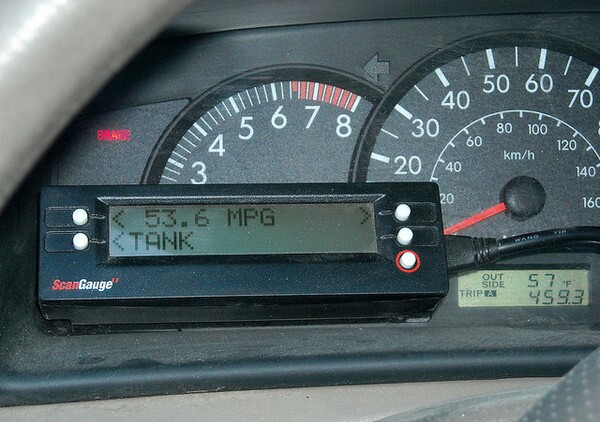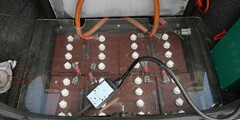White House Proposes Tough New Fuel Economy Rules

Photo: Hadley Paul Garland/Flickr/Creative Commons License
Green groups are lauding the President in the wake of an announcement that the Obama administration will mandate that new cars and light trucks reach a 54.5 miles per gallon standard by 2025. The move, which would amount to a doubling of current mileage standard, will likely prove a big boon to alternative fueled cars, plug-in hybrids, and electric vehicles.
Related


Transportation and Renewable Energy
The move doesn't mean that any car you buy in 2025 will get more than 50 mpg. Under a complex formula used by the National Highway Traffic Safety Administration (NHTSA) to calculate each automaker's "Corporate Average Fuel Economy" (CAFE), ultra-high mileage plug-in hybrids and electric vehicles' figures can be used to balance out standard gasoline-only engines, which could be difficult to push above 40 mpg without unforeseen advances in technology -- or completely retraining every driver on the road. But as that just means automakers will have a greater incentive to produce electric vehicles, that's more a feature than a bug.
CAFE standards have been a hot-button issue for a long time, and automakers and the Republican Party have resisted improvements in overall fuel economy since the standards were first created in 1975. That year's Energy Policy Conservation Act (EPCA) set the first CAFE standard, effective in 1978, at 18 mpg. In the last months of the Carter administration in 1980, NHTSA administrator Joan Claybrook advanced a technically feasible proposal to raise the CAFE standard to 48 mpg by 1995, a move which was countermanded by the incoming Reagan Administration. The 1975 EPCA mandated that the CAFE standard rise to 27.5 mpg in 1985; Reagan rolled that back to 26 mpg, then George Herbert Walker Bush nudged it back up to 27.5 in 1990, and there were no increases after that until 2011 -- a full 21 years with no fuel economy standards increase.
The 2011 standard was set at 30.2 mpg. under the terms of a 2009 pact between the administration and major automakers. Even before today's announcement, the CAFE standard was set to rise to 35.5 mpg in 2016. Today's boost comes with an out: if technological progress seems insufficient by 2018 to allow the 2025 CAFE standard to happen, the administration can push back the date a bit.
The biggest effect of the new rule is likely to be a large increase in electric and hybrid vehicles. No commercially available gasoline-only car or light truck currently comes close to 50 mpg; subcompacts and two-seaters tend to top out at 40 mpg or below, and light trucks bring that average down consierably. Meanwhile, an off-the-shelf Prius is rated at around 50 mpg, and electric-drive cars like the Mitsubishi MiEV can surpass that by a significant margin.
So the likely result of this standards boost, should it survive the next few years' political climate, is an increase in hybrid and electric vehicles, which itself has implications for the future of renewable energy: if every garage has an electric car in it plugged into the grid, then we've gone a long way toward solving the grid storage problem, meaning you might be able to use solar electricity in the middle of the night because it's been stored in your car in the meantime.
ReWire is dedicated to covering renewable energy in California. Keep in touch by liking us on Facebook, and help shape our editorial direction by taking this quick survey here.


